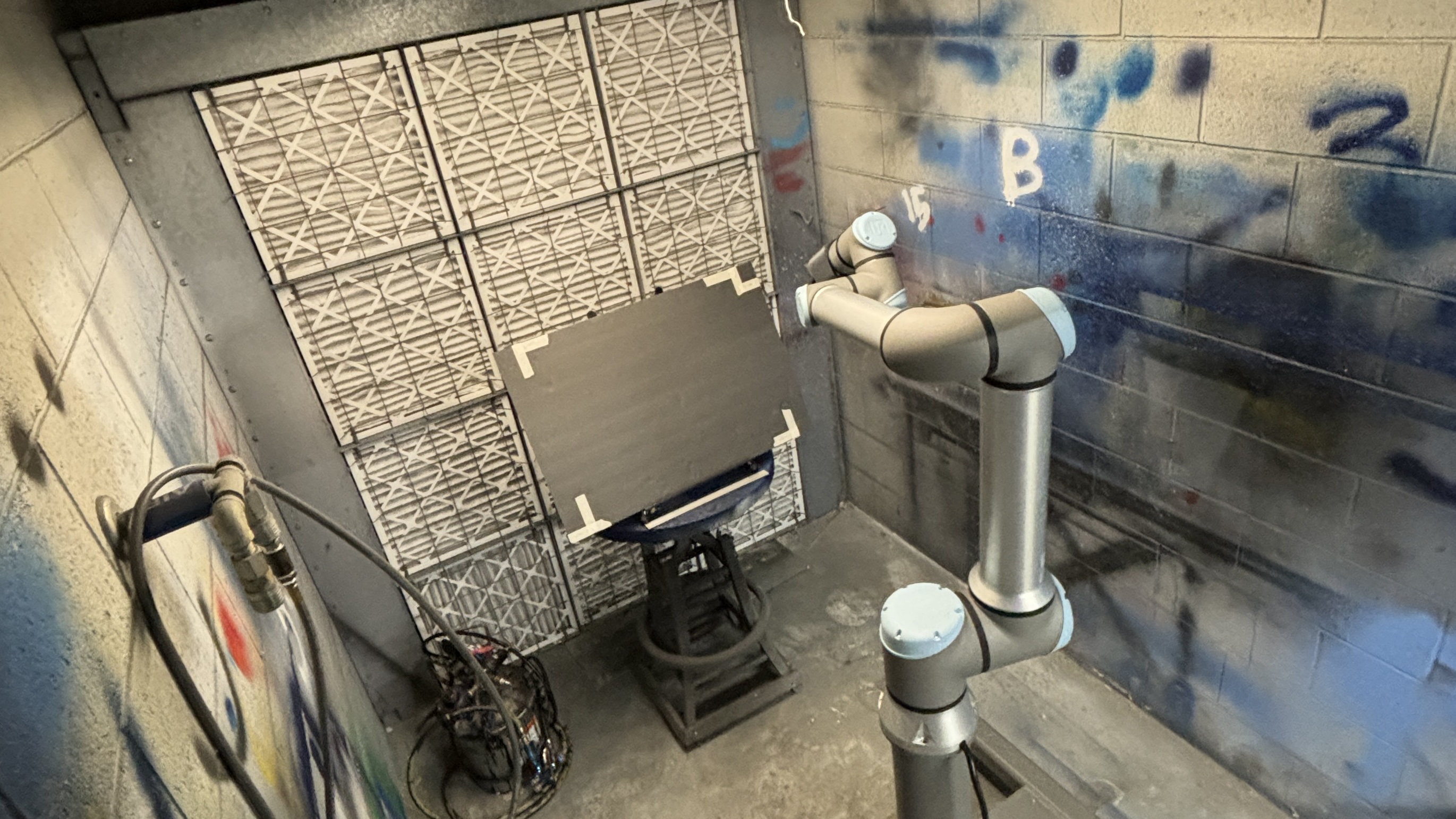

This video contains proprietary information and cannot be shared publicly at this time.
Figure 1

Team 61
Team Members |
Faculty Advisor |
Ryan Klinzmann |
Ryan Cooper Sponsor Willington Nameplate Inc. |
sponsored by

Automated Painting Process
Willington Nameplate in Stafford Springs Connecticut are seeking to transform their permanent labeling solutions which serve many industries from automotive and aerospace to food. One of their most common manufacturing processes involves sheets of stainless steel approximately 0.020” thick measuring 18”x24”. The label information is etched approximately 0.001 - 0.003” deep and then the entire sheet is manually painted with a High-Volume Low-Pressure (HVLP) spray paint gun. Paint in the non-etched surfaces is removed before the individual labels are cut from the sheets. The manual spray painting process has many variables that can impact the quality of the labels. These variables include but are not limited to operator fatigue, spraying inconsistently across the sheet, and too high or low pressure on the gun. Senior Design team ME61 is tasked with integrating the manual spray gun into a seamless automated solution which utilizes a collaborative robotic arm. After the completion of the project, a proof of concept solution and optimal criteria for spray painting with robotics is to be provided to the sponsor. The team is working on designing an end-effector for the manual spray gun and electrical components to allow automatic actuation. In depth experiments with multiple trials are conducted at a paint booth in UConn to figure out the optimal painting path and fan shape configurations for the spray gun. The team will be assessing the quality of the finished paint job by following industry standards such as adhesion tests. Programming of the painting path will be done using the UR10e robot's complimentary software and teaching pendant. Safety requirements such as an emergency stop button and variable speed control are implemented to allow a manual operator to safely work alongside the robot. Furthermore, a protective sleeve and other coverings were applied to the robot to protect all of its vulnerable components.
Our team collaborated with Electrical and Computer Engineering 13 on this project.
